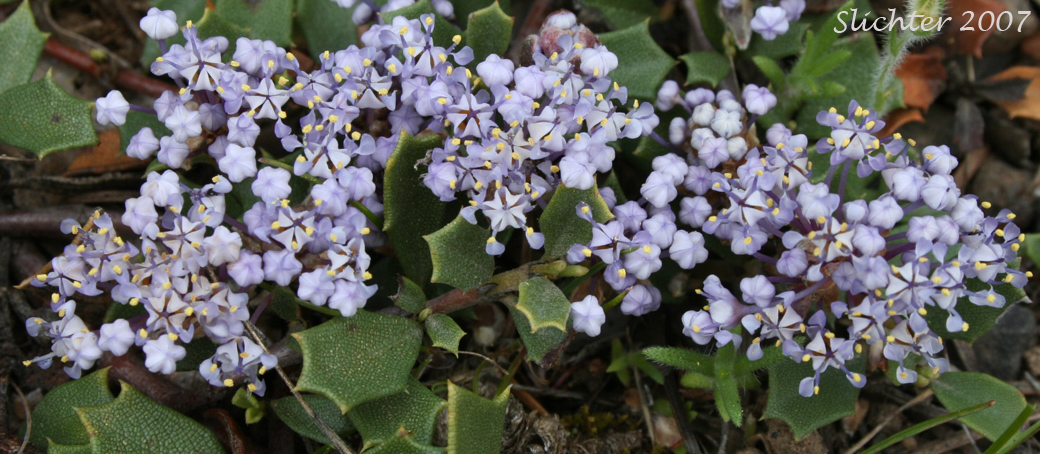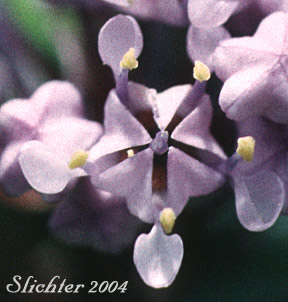
 The
photo at right shows a close-up of the flower of Mahala mat from Hunter Prairie
(BLM).........May 1996. The flower color varies from white to powder
blue.
The
photo at right shows a close-up of the flower of Mahala mat from Hunter Prairie
(BLM).........May 1996. The flower color varies from white to powder
blue.
Mahala mat is an attractive shrub for use as a ground cover in the rock garden or open forest garden. It forms mats from 1-3 meters wide and 3-5 cm high with the stems sometimes rooting at the nodes when they touch the ground. The younger twigs are covered with minute, fine hairs which are lost as the stem ages. The leaves are obovate with wedge-shaped bases and with several broad, triangular teeth along the margins, each tipped with a small spine (See photos.). Sometimes, the margins are entire with 3 spine-tipped teeth at the tip of the blade. The short-petiolate leaves measure 1-2.5 cm long and are fairly thick in cross-section. The upper surface of the blades is glabrous and dark green in color while the lower blade surface is covered with minute white hairs below.
The inflorescence consists of 10-30 flowers in subumbellate clusters or corymbs on short lateral branches. The slender pedicels are 1.5-3.5 cm long. The white to blue flowers are about 4 mm wide with the calyx folded inwards toward the style and the small oval petals spreading (See photo at right.). The 5 yellow-tipped stamens extend beyond the folded calyx at the base of the petals. The fruit is a capsule from 6-8 mm long with 3 short divergent horns at the anterior end.
Mahala mat is typically found on the dry floors of coniferous forests. It is often found in open Ponderosa pine forests.
Mahala mat is found along the east slope of the Cascade Mts. from Yakima County, WA south through Oregon to the eastern base of the Sierra Nevada Mts. of California. It extends eastward to western Nevada and extends westward to southwestern Oregon and northwestern California.